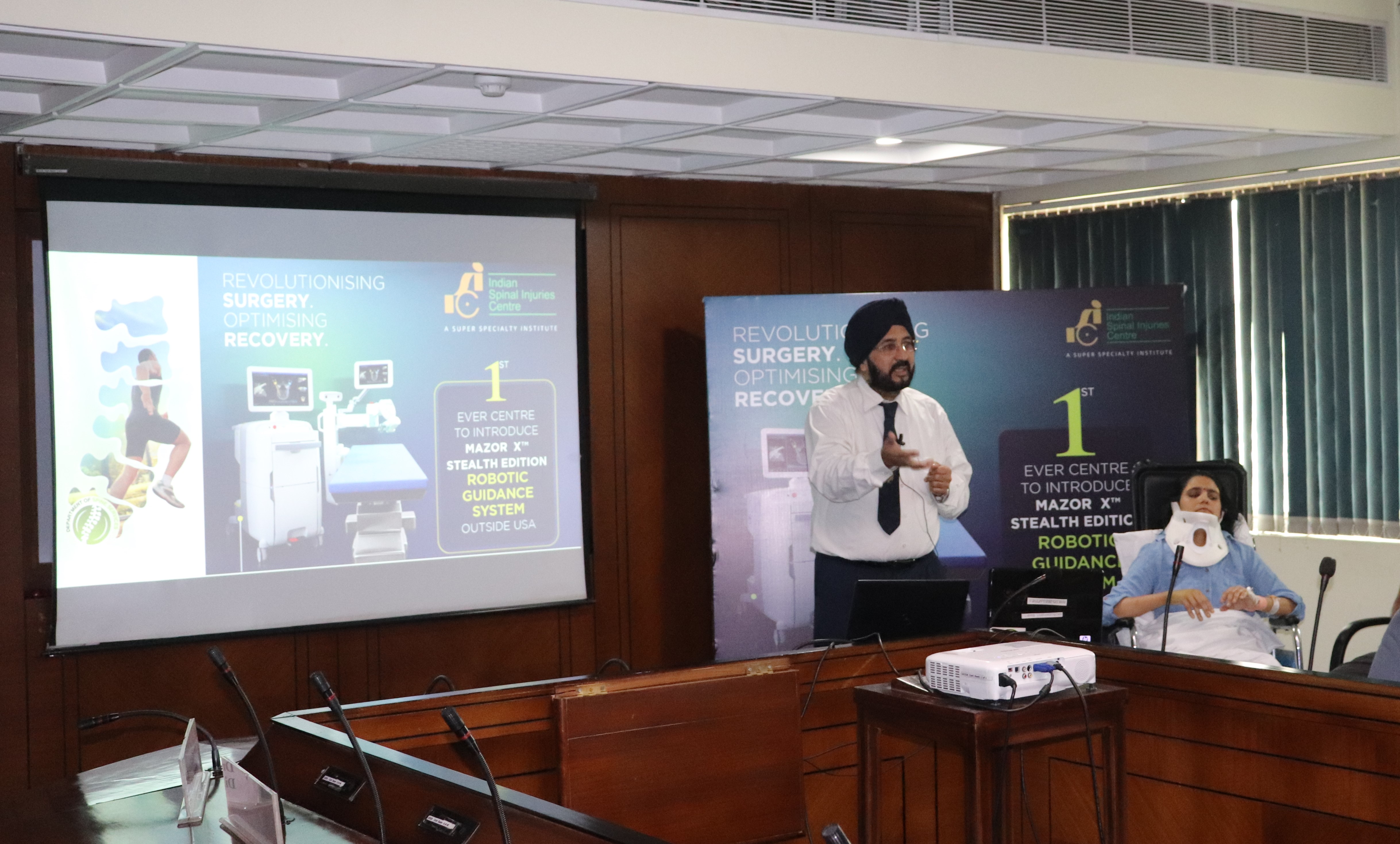- Marwah Studios Institutes the Prestigious 'Netaji Subhas Chandra Bose National Award for Education'
- New Board Designed to Celebrate 33 Years of Marwah Studios
- Indian Institute of Science launches 'Longevity India Initiative' to pioneer ageing research in India
- GD Goenka University’s School of Law Successfully Hosts 4th International Law and Technology Moot Court Competition
- Data Protection Dilemma: Analyzing the Veritas Cohesity Merger's Risks and Solutions
- 3 Questions from Aspiring Real Estate Professionals About Earning a Real Estate License in Michigan
- Alepo Technologies Successfully Deploys Advanced AAA Solution for VodafoneZiggo in Partnership with Nomios Group
- This April, Aravali Kitchen at Courtyard by Marriott Aravali Resort extends an invitation to Taste the Himachali Dham Special Dinner
- Aerospace Exchange Bolsters Offerings and Services to Streamline Civil and Military Aviation Part Procurement
- Sommet Education Unveils New Step in Strategic Digital Expansion with Online Executive Certificates
- LAUNCH OF THE BOOK - In The Woods - Oruku by Roma Dessai
- Neue Auctions' April 27th, Art in Bloom Auction Features Contemporary Art Glass, Paintings, more
- Viaante Recognized Among Top 20 IT Services Companies by DesignRush
- Times Prime's New Billboard at Mumbai Sea Link Proves Too Small to Contain Its Massive Membership Benefits
- Codilar To Showcase Award-Winning Digital Commerce Solutions At Seamless Middle East 2024
 Mail to a Friend Mail to a Friend |
|
     |
First Hospital Outside US to Successfully Perform Complex Spinal Surgeries Through Advanced Spine Robotics System

New Delhi, 10 July 2019: Achieving a major milestone, the Indian Spinal Injuries Centre (ISIC), New Delhi has become the first hospital outside the US to add a highly advanced robotics system to its spine surgery capabilities. The hospital has already performed more than 5 successful precision surgeries using the recently acquired advanced Spine Robotics System.
?Indian Spinal injuries Centre is the first facility in the world after US to introduce the advanced Spine Robotic system. Surgeries conducted through advanced robotics reduce implant inaccuracies, revision surgeries, radiation exposure, length of stay and infection. Such high improvements in so many parameterssimultaneously can drive significant clinical efficiency and reduce the burden on healthcare system in the medium to long run. It gives us immense pleasure to announce its induction in our system as this will help the doctors of ISIC serve the patients of spine injuries better and in a cost-effective manner,? says Dr. H S Chhabra, Medical Director Cum Chief of Spine Services, Indian Spinal Injuries Centre (ISIC), New Delhi.
This week, a team of spine surgeons led by Dr. H S Chhabra, Medical Director Cum Chief of Spine Services, Indian Spinal Injuries Centre (ISIC) successfully operated on Preeti Pandey, a 33-year old woman suffering from Post Tubercular Kyphotic Deformity. Preeti complained of severe progressive weakness of both lower limbs, inability to control bowel and bladder involvement and deformity of back. She was diagnosed with cervico-thoracic kyphosis due to the spinal tuberculosis where two procedures ? robotic posterior stabilization, vertebra column resection, deformity correction and mesh cage insertion ? were performed to correct her deformity and stabilize her movement. She experienced minimum post-operative pain and started walking within a day.
In another case, doctors performed a spinal fusion procedure on Satish Kumar, a 50-year man working in the Indian embassy at Beijing, China, who had developed low back pain radiating to the legs as well as heaviness in both the legs and was unable to walk more than 100 metres. He was diagnosed with spondylolisthesis, a spinal disorder in which a bone (vertebra) slips forward over the bone below it. The robotic minimal invasive Transforaminal Lumbar Interbody Fusion (TLIF) was performed with minimal incision and bleeding. Satish is significantly better after surgery and could walk upto 3 kilometres without any leg pain and with minimal post-operative pain within 3 days of surgery.
Robotics is a recent advancement in spine surgeon robotics is a boon, particularly in high volume facilities such as the Indian Spinal Injuries Centre (ISIC).
This robotic system combines advanced software, robotic technology, navigation, and instrumentation. The advanced software has deep artificial intelligence and sophisticated 3D analytics component. The latest generation robotics also has an infra-red camera that continuously tracks and navigates the movement of instruments and implants in relation to the patient anatomy and surgical plans. On the hardware front, the system uses a customized robotic arm that can perform extremely difficult maneuvering to enable complex procedures with high degree of precision.
?Spine is one of the most important parts of the human body and performing a surgery on it is extremely delicate as even a minor error can cause severe, long-term consequences on the person which could be devastating. Hence, spine surgeons have to be extra careful about the methods they choose and are more than likely to opt for a technology that enhances their precision and ensures a better outcome. Those who are suffering from neck or back conditions can immensely benefit from the advanced technology that allows surgeons to perform less invasive surgical procedures with smaller incisions, less operative bleeding, faster recovery time and shorter hospital stays ? it allows them to plan and create a blueprint for each surgical case. Serious medical complications such as complex cases of scoliosis and kyphosis, degenerative disc diseases, herniated discs, and spondylolisthesis can be successfully treated while those who are seeking a spinal fusion or revision surgery from failed prior surgery may also seek robot-guided assistance for the process,? says Dr. Chhabra.
The technology allows surgeons to use images from a computerized tomography scan (CT scan) taken before surgery to create a blueprint for each case. These images are loaded into a computerized 3D planning system. In the operating room, surgeons do the physical surgery while the system guides his or her instruments based on pre-operative planning of spinal implant placement. During the surgery, the robot is placed near the patient either by attaching it to the bed or directly anchoring it to the spine of the patient.
About Indian Spinal Injuries Centre
ISIC is the most advanced Spine, Orthopedic and Neuromuscular Surgical centre in India with the latest state of the art diagnostics and surgical equipment and a highly qualified team of specialists recognized internationally who have been trained in leading institutes of India and abroad.
Indian Spinal Injuries Centre provides state of the art facilities for the management of all types of spinal ailments. It has a team of dedicated, internationally trained acclaimed spine surgeons providing cutting edge medical, surgical technology.
Company :-Teamwork Communication Group
User :- Sanghamitra Chandra
Email :-sanghamitra@groupteamwork.com











